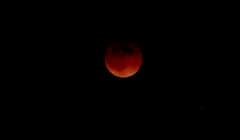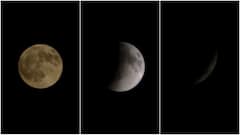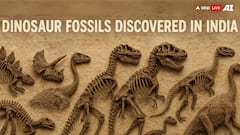10 NASA Payloads Are Heading To The Moon As Firefly Blue Ghost Lifts Off — WATCH
Firefly Aerospace's Blue Ghost Mission 1 launched from Kennedy Space Center, carrying 10 NASA payloads to the Moon. Over 45 days, Blue Ghost will travel to the Moon's Mare Crisium basin.

The Kennedy Space Center In Florida witnessed a historic moment on January 15 as Firefly Aerospace's Blue Ghost Mission 1 successfully launched aboard a SpaceX Falcon 9 rocket. The liftoff occurred at 1:11 am from Launch Complex 39A, marking a major milestone in NASA’s Commercial Lunar Payload Services (CLPS) initiative and the Artemis program.
This mission is set to deliver a suite of 10 cutting-edge NASA payloads to the Moon’s Mare Crisium basin, near a volcanic feature known as Mons Latreille. Over the next 45 days, Blue Ghost will traverse space before its targeted lunar landing. Once on the Moon, the payloads will perform groundbreaking experiments and technology demonstrations aimed at advancing lunar science, navigation, and exploration capabilities, NASA said.
There it goes: our post-holiday delivery aboard Blue Ghost begins its journey to the Moon!
— NASA (@NASA) January 15, 2025
In addition to providing information about the Moon, the data these instruments will capture could help us on Earth by providing insights into how space weather impacts our planet. pic.twitter.com/YlN8WdlpVd
What The Firefly Mission Aims To Achieve
According to NASA, Blue Ghost Mission 1 is a pathfinder for the future of space exploration. By tackling questions about lunar navigation, spacecraft interaction with the Moon’s surface, and the impact of Earth’s magnetic field on space weather, the mission intends to pave the way for human exploration and long-term presence on the Moon. Key technologies being tested include advanced regolith sampling, subsurface drilling, radiation-resistant computing, and dust mitigation strategies.
10 NASA Payloads On Board Blue Ghost
1. Lunar Instrumentation for Subsurface Thermal Exploration with Rapidity (LISTER): The tool measures heat flow from the Moon’s interior using pneumatic drilling technology. This data will help scientists understand the Moon’s formation and cooling history. The tool has been developed by Texas Tech University.
2. Lunar PlanetVac (LPV): It collects regolith samples using compressed gas for analysis. This low-cost technology could enhance planetary science missions.
3. Next Generation Lunar Retroreflector (NGLR): A tool that reflects laser pulses from Earth to precisely measure the Earth-Moon distance, aiding in lunar coordinate system accuracy and studying the Moon’s internal structure.
4. Regolith Adherence Characterization (RAC): It investigates how lunar dust adheres to various materials, providing insights for protecting spacecraft and habitats from regolith damage.
5. Radiation Tolerant Computer (RadPC): A technology that demonstrates fault recovery from ionising radiation, a critical step for reliable computing in deep-space environments.
6. Electrodynamic Dust Shield (EDS): It uses electric fields to remove hazardous lunar dust from surfaces, protecting equipment and improving mission reliability.
7. Lunar Environment heliospheric X-ray Imager (LEXI): The tool captures X-ray images to study interactions between solar wind and Earth’s magnetic field, shedding light on space weather phenomena.
8. Lunar Magnetotelluric Sounder (LMS): The technology maps the Moon’s mantle by measuring electric and magnetic fields, offering insights into its thermal evolution.
9. Lunar GNSS Receiver Experiment (LuGRE): It tests the use of Earth’s GPS and Galileo navigation systems for lunar positioning, potentially revolutionising navigation for future missions.
10. Stereo Camera for Lunar Plume-Surface Studies (SCALPSS): The device uses stereo imaging to study rocket exhaust impacts on lunar regolith, crucial for safe landing of larger spacecraft in the future.
Top Headlines






































